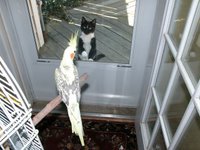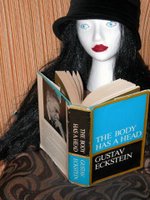
Stills
First, A note on Gully Jimson, the G. Jimson of the blog title.
Gulley Jimson is the wild-eyed artist, a character who lives in Joyce Cary’s trilogy of novels, most notably in the one called The Horse’s Mouth (1944, Harper & Brothers, NY), in which Gulley tells his own story. I have loved him since I read it aeons ago. (It is one of my compulsive collectibles.) A film was made of the book in which Alec Guinness plays the part.
Consider this a brief quotation “for review.”
“As every painter knows the fourth look is often lucky. It is always a good plan, during an attack of the jimjams, to try at least four matches. A picture left about in the dark will often disappear for three matches, and com back again, at the fourth, a regular masterpiece. Something quite remarkable. But the match went out before I could see whether I was looking at genuine intuition of fundamental and universal experience in plastic forms of classical purity and simplicity, or a piece of barefaced pornography that ought to be dealt with by the police.”
Joyce Cary was said to have never worried about sales, money or contracts. He had decided that if any of his books were worthwhile, they would eventually find readers. Find them they did. The spirit of adventure is alive and well and living in places we have never heard of.
Here is another gem: “And I was so hungry I could have eaten the frypan and tickled my gums with the handle.”
Next, a mention of a hit Nigerian song about “419 crimes,” cyber-scams. I heard this song on the radio today and had to look it up. Since I grew up in Nigeria, I smiled and shook my head as I listened to the whole radio story. The LA Times, and other sources, have stories about Nigeria and the cyber-schemes. The song is called, “I Go Chop Your Dollars.” If you grew up hearing some version of “pidgin”(English), and if you are “white,” you’ll appreciate the “Oyinbo people greedy” line.
I Go Chop Your Dollars







